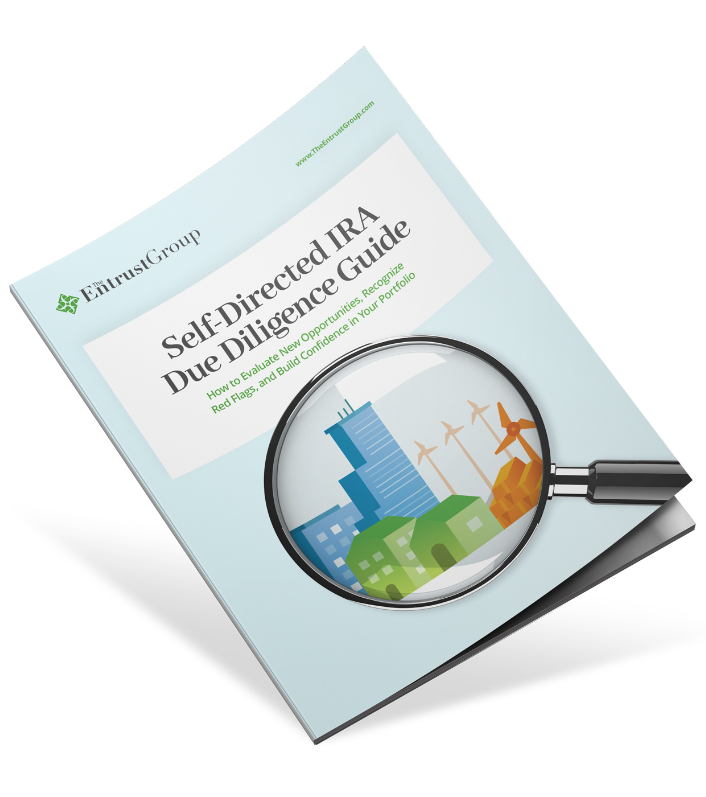4 Non-Accredited Investor Opportunities

Estimated reading time: 6 minutes
Private equity investments have long been synonymous with exclusivity, reserved primarily for accredited investors. These individuals, characterized by their wealth and financial sophistication, historically have greater access to private opportunities beyond the reach of the average investor.
That’s beginning to change.
Recent regulatory changes and the rise of innovative investment platforms have opened doors for non-accredited investors. Now, middle-class investors are able to access some of the same private offerings as accredited investors.
While this market is generally higher-risk than those afforded by the public markets, if you invest in the right asset at the right time, the rewards can be potentially lucrative.
As the investment landscape evolves, it's essential for all investors to understand the expanding opportunities available. In this blog post, we’ll identify four new opportunities for non-accredited investors to access private offerings.
Table of Contents
- What is an Accredited Investor
- 4 Opportunities for Non-Accredited Investors
- Access Non-Accredited Investor Opportunities with a Self-Directed IRA
- Conduct Thorough Due Diligence on Private Equity Opportunities
What is an Accredited Investor?
Nearly a century ago, the U.S. Securities and Exchange Commission (SEC) introduced the "accredited investor" designation in response to the speculative investment frenzy of the 1920s.
With many middle-class investors losing their life savings in the market crash of 1929, the SEC aimed to protect investors by restricting higher-risk private market offerings to those who could better withstand potential asset collapses.
To be considered an accredited investor, you must reach thresholds for annual income or net worth.
You must have either:
- Earned income exceeding $200,000 in each of the two most recent years, or a joint income with a spouse exceeding $300,000 in each of those years, and a reasonable expectation of reaching the same income level in the current year.
- Or an individual or joint net worth, with a spouse, of over $1 million at the time of the investment.
- Note: The value of your primary residence may not be included when calculating net worth.
Most Investors are Non-Accredited
A non-accredited investor is simply any investor who doesn’t meet either of the two requirements listed above. Given the relatively high income and net worth levels, most investors are non-accredited.
While limited access to private markets may have protected some middle-class investors, no solution is perfect. Some critics have argued that it grants the already-wealthy access to potentially lucrative investments. In truth, their argument may have merit.
The U.S. Private Equity Index demonstrated an average annual return of 10.48% over the two decades concluding on June 30, 2020. In comparison, the S&P 500 yielded 5.91% during the same period.
In a significant shift, recent legislative and regulatory changes are dismantling the barriers that have historically excluded these non-accredited middle-class investors from these markets.
4 Opportunities for Non-Accredited Investors
Now that we’ve defined accredited and non-accredited investors, let’s explore four avenues for non-accredited investors to access private markets.
Remember, private offerings carry increased risk compared to public markets and are typically less liquid, requiring a long-term commitment. If you’ve never invested significant sums in the private markets before, keep these considerations in mind before you make any moves in your portfolio.
1. Regulation Crowdfunding (Title III)
Title III of the JOBS Act of 2012 introduced Regulation Crowdfunding, allowing private companies to raise capital from a wide range of investors, including non-accredited individuals. This legislative change democratized early-stage investment opportunities to middle-class investors.
Companies seeking to raise capital under Regulation Crowdfunding must do so through SEC-registered crowdfunding platforms, also known as "funding portals." These platforms play a crucial role in facilitating the offering and providing a medium for communication between issuers and investors. Some examples include StartEngine, SeedInvest, and Republic.
There are annual limits on the amount an individual can invest based on their income and net worth, providing a measure of investor protection.
If either your annual income or net worth falls below $124,000, the most you can invest within any 12-month span is the greater of:
- $2,500
- Or 5% of your income or net worth
On the other hand, if both your annual income and net worth are over $124,000, your investment cap is 10% of your net worth or income, whichever is greater. Although, your total investment in any 12-month period may not surpass $124,000.
2. Regulation A Offerings
Regulation A, often referred to as Reg A, is a securities regulation that allows companies to raise capital by offering securities to the public, including non-accredited investors.
This regulation was also introduced as part of the JOBS Act and provides an exemption from certain registration requirements.
Reg A consists of two tiers, commonly known as Tier 1 and Tier 2.
Tier 1: Allows companies to raise up to $20 million in a 12-month period. Offerings under Tier 1 are subject to state securities regulations in addition to SEC oversight.
Tier 2: Allows companies to raise up to $75 million in a 12-month period. To add an increased layer of investor protection, Tier 2 offerings entail additional requirements. These include, but are not limited to:
- The submission of audited financial statements.
- Annual and semiannual reporting.
- Limitations on sales by security holders.
- Investment restrictions for non-accredited investors.
- Continuous reporting obligations.
3. Real Estate Crowdfunding
Significant real estate projects and funds have long been recognized as a cornerstone of private equity. Now, non-accredited investors can now be part of the narrative.
Real estate crowdfunding platforms, such as Fundrise, RealtyMogul, and CrowdStreet, act as intermediaries connecting investors with real estate developers or projects.
Investors typically participate through debt or equity models. In the debt model, investors provide loans to developers and receive interest payments. In the equity model, investors become partial owners of the property and may receive a share of rental income and potential profits upon sale.
Real estate crowdfunding is enabled by Regulation Crowdfunding, so the same investment limits apply for non-accredited investors.
4. Interval and Closed-End Funds
Interval funds offer non-accredited investors access to alternative investments like private equity, real estate, and private debt with periodic opportunities to buy or sell shares. These funds are closed-end. To define a closed-end fund, first let’s define an open-end fund.
Open-end funds are those that continually accept new funds and new investors, as long as they provide an infusion of capital. This definition applies to most mutual funds. In contrast, closed-end funds do not create new shares or allow new funds to enter the existing pool.
The benefits of interval funds include restriction of impulsive trading and access to institutional-grade alternatives. Investors are also drawn to potential high yields, as interval funds often outperform open-end funds.
However, no investment is without drawbacks. Interval funds often entail illiquidity, uncertain share redemption, higher fees, and substantial minimum investments.
Access Non-Accredited Investor Opportunities with a Self-Directed IRA
As the barriers-to-entry to private markets continue to fall, early-stage investment opportunities may offer high-risk, high-reward offerings to middle-class investors.
That said, the markets aren’t completely democratized. For instance, what if you encounter a promising opportunity that falls under the restrictions defined above but you lack the funds to invest?
Well, you may have an additional pool of funds you can access hiding in plain sight – your existing retirement funds.
To unlock these funds, you need a self-directed IRA (SDIRA).
Contrary to a common misconception held even by seasoned investors, your retirement funds aren't limited to traditional securities like stocks, bonds, and mutual funds. In fact, the IRS also allows you to invest your tax-preferred funds in alternative assets like real estate, precious metals, and even private equity. You just need an IRA provider that has the infrastructure to administer investment in these asset classes, otherwise known as an SDIRA provider.
With an SDIRA, you can unlock your existing retirement funds and invest them in any asset the IRS allows. Simply open your account, fund it with a transfer or rollover from an existing IRA or inactive 401(k), and purchase the assets.
Plus, if you’re an Entrust client, you have access to Entrust Connect, our exclusive offering platform. Entrust Connect offers a wide array of investment options, and is continually updated with new startup and property development ventures.
While some offerings limit investment to accredited investors, there are numerous opportunities for non-accredited investors as well. With offerings ranging from $5,000 to $200,000, finding the perfect fit for your budget has never been easier.
Note: Entrust does not endorse, recommend or advise on any investment product or service. Rather, Entrust provides the administration, information, and tools to make self-direction straightforward and compliant.
Conduct Thorough Due Diligence on Private Equity Opportunities
Of course, you shouldn’t make any investment without conducting proper due diligence. This process holds particular importance for non-accredited investors, as they have less financial cushion to absorb heavy losses.
Fortunately, knowing the right questions to ask can help you assess and mitigate these risks more effectively.
For a deeper understanding of how to evaluate investment opportunities, download our Due Diligence Guide. Inside, you'll find a comprehensive (though not exhaustive) checklist, offering valuable insights for assessing any investment. Plus, we’ve identified some essential warning signs to look out for as you’re considering private equity opportunities.

Self-Directed IRA Due Diligence Guide
Before venturing into any investments, seek guidance from a trusted financial advisor. Their expertise can help you navigate complexities, ensuring a thorough assessment of the offering.
Curious about whether an SDIRA aligns with your financial goals? Connect with one of our SDIRA experts. While they cannot offer financial or investment advice, they can provide tailored information about SDIRAs and address any questions you may have concerning your unique financial situation.






























0 Comment